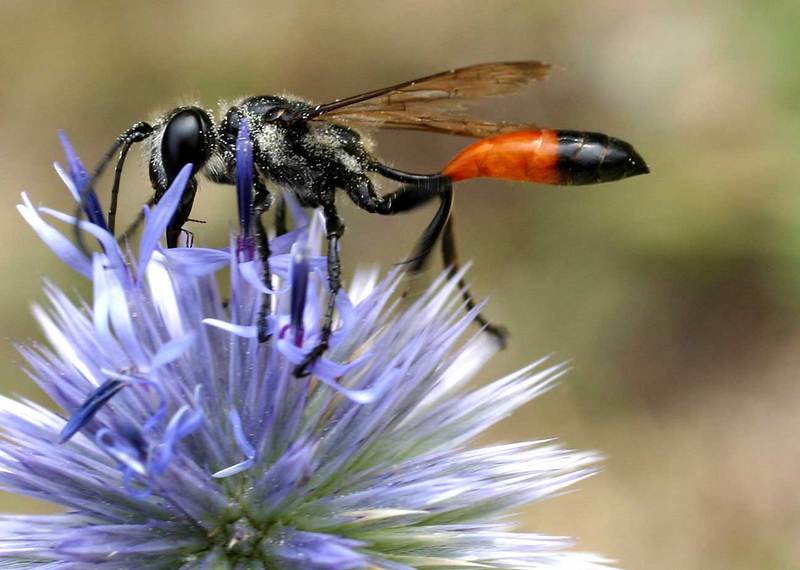Thread-waisted Wasp (Family: Sphecidae) - Wiki Sphecidae
From Wikipedia, the free encyclopedia
[Photo] Ammophila sabulosa. Source: source: http://home.tiscali.be/entomart.ins/ Image URL: http://en.wikipedia.org/wiki/Image:Ammophila_sabulosa01.jpg
Sphecidae (Latreille, 1802) is a cosmopolitan family of wasps that include digger wasps, mud daubers and other familiar types that all fall under the category of thread-waisted wasps. Both of the traditional definitions of the Sphecidae (the conservative one, where all the sphecoid wasps other than ampulicids and heterogynaids were in a single large family, and the more refined one, where the 7 large sphecid subfamilies were each elevated to family rank) have recently been shown to be paraphyletic, and the most recent classification is closer to the conservative scheme; the families Heterogynaidae and Ampulicidae are the sister taxa to what are now two families (instead of one), the Sphecidae and Crabronidae. Thus, the bulk of the sphecoid wasps are now placed in Crabronidae, and Sphecidae per se is a much more restricted concept, equivalent to what used to be the subfamily Sphecinae.
The biology of the Sphecidae, even under the restricted definition, is still fairly diverse; some sceliphrines even display rudimentary forms of sociality, and some sphecines rear multiple larvae in a single large brood cell. Many nest in pre-existing cavities, or dig simple burrows in the soil, but there are also species which construct free-standing nests of mud and even (in one genus) resin. All are predatory, but the type of prey ranges from spiders to various dictyopterans or orthopteroids to caterpillars (of either Lepidoptera or other Hymenoptera).
Subgroups
Subfamily Ammophilinae
Ammophila
Podalonia, etc
Subfamily Sceliphrinae
Chlorion
Sceliphron
Stangeella, etc
Subfamily Sphecinae
Chilosphex
Isodontia
Palmodes
Prionyx
Sphex, etc
http://en.wikipedia.org/wiki/Sphecidae
| The text in this page is based on the copyrighted Wikipedia article shown in above URL. It is used under the GNU Free Documentation License. You may redistribute it, verbatim or modified, providing that you comply with the terms of the GFDL. |
